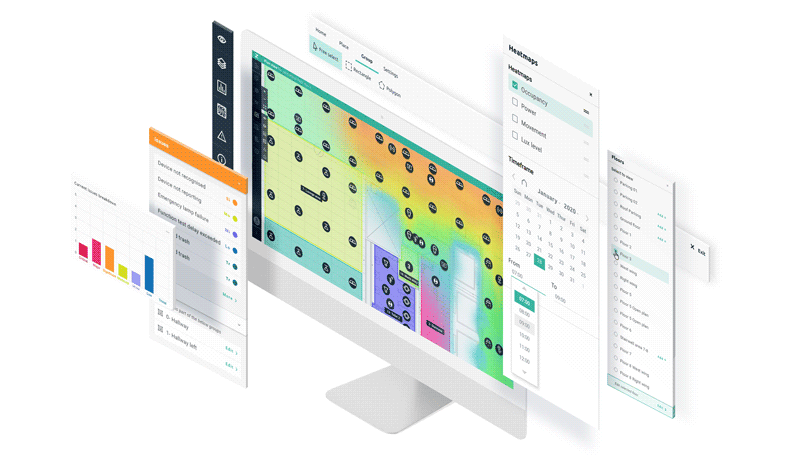Why we need data
 As human beings, we rely on data to make everyday decisions. Some data comes simply from experience e.g. “if I leave now I’ll avoid the worst traffic congestion, and my journey will take less time”. On other occasions we look to data provided by trusted sources “the recipe says the dish will take 45 minutes to cook at 180 degrees centigrade.”
As human beings, we rely on data to make everyday decisions. Some data comes simply from experience e.g. “if I leave now I’ll avoid the worst traffic congestion, and my journey will take less time”. On other occasions we look to data provided by trusted sources “the recipe says the dish will take 45 minutes to cook at 180 degrees centigrade.”
Without data, or feedback, it can be hard to make decisions . . .
“Does this colour suit me?”
“Is this the correct route to take?”
The more complex the task (and arguably, the greater the risk) the more data is required.
Riding a bike for example requires the availability of only limited data.
“Is there air in my tyres? Is the seat at the correct height? Do I know where I’m going?”
However, to fly a commercial aircraft (complex and greater risk), the pilot relies on a constant stream of data from multiple sources to show systems are functioning well and allow for changes in weather conditions, etc.
When the pilot wishes to prepare for arrival at the destination, operating the relevant control will lower the wheels, and provide feedback the wheels are locked for landing. This is functional data. In addition a myriad of other sources will be providing continuous analytic data, no doubt measuring windspeed, applying it against weight of aircraft, weather conditions, distance travelled etc to allow certain predictions such as ‘time of arrival’ to be made.
Data for intelligent buildings
If we apply the same terms to lighting: functional data is provided when you flick a switch and the light goes on. With a DALI system in an intelligent building you may also receive feedback that confirms the lighting is on, and the level of the illuminance.
Feedback from your DALI lighting control system can also provide fee dback when dimming is required, indicating the change of status, and the light level set. Daylight harvesting requires measurement of natural light levels via a sensor, and the “topping up” of artificial lighting to achieve pre-set targets.
dback when dimming is required, indicating the change of status, and the light level set. Daylight harvesting requires measurement of natural light levels via a sensor, and the “topping up” of artificial lighting to achieve pre-set targets.
Where a DALI system, and in particular the zencontrol DALI system that we propose, comes into its own, is in the provision of diagnostic or analytic data.
The wide range of information that can be provided in an intelligent building by this system assists with improving the efficiency of the lighting installation as well as ensuring performance and life.
Information can be provided not only on energy use, but even on performance and power used by an individual driver. Data can indicate actual lamp life as against the manufacturer’s claim, and be used for future buying decisions.
DALI-2 allows feedback from sensors and switches which provides a wider snapshot of how the system is operating at any time, and can highlight potential points of failure, and basic performance metrics which are extremely useful for servicing and maintenance.
An incorporated DALI-2 emergency system can provide details on statuses of connected batteries and EM luminaires, as well as recording EM hours run.
zencontrol dashboards and intelligent buildings
 zencontrol has provided the ability to present this data using dashboards and smart graphics that not only provide easy-to-use visualisations of an intelligent building’s performance but also allow owners and facility managers to analyse data provided and take steps to improve on the performance of their buildings.
zencontrol has provided the ability to present this data using dashboards and smart graphics that not only provide easy-to-use visualisations of an intelligent building’s performance but also allow owners and facility managers to analyse data provided and take steps to improve on the performance of their buildings.
The release of DALI-2 provided the ability to receive feedback with intelligent sensors which allows for accurate recording of how space is utilised. The zencontrol smart sensors (now both wired and wireless) allow the use of environmental data received via the sensor. As well as providing information on occupancy and the level and colour of lighting, these intelligent sensors can now report on air quality, temperature, humidity, sound and pressure.
Using the zencontrol software package via the Cloud, data can be stored and analysed, and used to set critical alarms to ensure environmental conditions are kept within required parameters. As the lighting control system provides the input to the HVAC or BMS system, the need for additional hardware by those systems is reduced. The DALI-2 lighting control provides an open platform where compliant devices can form part of the intelligent grid, and provide a key component in the overall management of a building.
Schedules can allow for different operation of lighting by sensors according to time of day. For example after-hours operation for cleaning may be allowed for, but outside of “cleaning times” occupancy may operate as part of the building alarm system, and trigger an event rather than switch lighting.
All data received from devices is recorded and saved. This means any remedial works or modifications are also recorded and full traceability is available. This is imperative for essential systems such as emergency lighting.
Each access to the intelligent building lighting control system creates a digital footprint allowing visibility of who has undertaken changes, and any potential risks for non-conformities. If a Service Level Agreement (SLA) is in place, data from the control system can advise if an SLA has been met, or when the problem was resolved.
We consider DALI-2 to be the key feature of any smart system as it provides consistency based on open protocols. Dashboards to display both functional and analytical data are likely to be customised according to the requirements of the building owner or tenant and the level of data that they wish to record.
Buildings are dynamic spaces, and it is important that data should be monitored and systems adjusted to ensure best performance. Monitoring and reporting, combined with preventive maintenance and corrective action when required guarantees compliance obligations are met, and the health and comfort of your staff is assured. Having the right software to provide easy to read dashboards is essential to ensure data can be analysed and used productively. By constantly measuring and comparing data, your building system can maximise benefits and minimise costs by extending the life of hardware through good management.
For more information about recording and displaying data for your intelligent building, just give us a call



